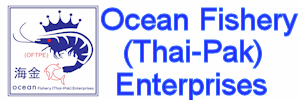Fishery and Aquaculture Country Profile for Cuba
- aquatic species caught by country or area, by species items, by
FAO major fishing areas, and year, for all commercial, industrial,
recreational and subsistence purposes. The harvest from mariculture,
aquaculture and other kinds of fish farming is also included.
Caribbean spiny lobster (Panulirus
argus) is one of the largest fisheries sectors in Cuba.
Other important fish & seafood
species include silver hake, blue tilapia, silver carp, snapper,
oysters and clams, sharks, pink shrimp, tunas and squid.
The Cuban fishing fleet
sectors: the Flota Cubana de Pesca (FCP), a distant-water fleet
targeting low-valued species such as mackerel, herring and hake for
the domestic market; the Flota Atunera de Cuba (FAC), composed of
tuna and swordfish longliners operating in the Gulf of Mexico and
Mid-Atlantic regions; the Flota del Golfo (FG), targeting bottom
fish and reef fish in near-shore waters, and finally the Flota de
Plataforma (FP), which went after high-valued, near-shore species
such as shrimp, spiny lobster, sponge, reef fish and crab.
AQUASTAT is FAO's global information
system on water and agriculture developed by the Land and Water
Division. It collects, analyses and disseminates data and
information by country and by region. Its aim is to provide users
interested in global, regional and national analyses with
comprehensive information related to water resources and
agricultural water management across the world, with emphasis on
countries in Africa, Asia, Latin America and the Caribbean.
Information for Cuba
About Large Pelagic Fishing in Cuba:
The pelagic fishing fleet in Cuba has
been reduced over the last 10 years. At present 42 vessels are
dedicated to pole and line and longline fishing, targeting pelagic
fish species such as: skipjack, blackfin tuna, yellowfin tuna,
white
marlin, sailfish, and the common
dolphinfish
(mahi mahi). The gears used in
targeting the large pelagic species are the pole and line and the
surface longline with as many as 500 hooks. At least 19 of the
vessels described above are used specifically to engage in
longlining.
Data from the large pelagic species
fisheries is collected via a sampling plan in all fishing ports.
This system records data by species, effort, boats, gear and area
fished. Part of the catch from the smaller tunas is canned for
export, while the balance is sold in the local markets. Cuba has no
management regulations for large pelagic fish species generally,
except that there are prohibitions on landings of
skipjack and blackfin tunas below 30 centimetres fork length
Ocean
Health Index Cuba - The Ocean Health Index is a valuable tool for the
ongoing assessment of ocean health. By providing a means to advance
comprehensive ocean policy and compare future progress, the Index
can inform decisions about how to use or protect marine ecosystems.
The Index is a collaborative effort, made possible through
contributions from more than 65 scientists/ocean experts and
partnerships between organizations including the National Center for
Ecological Analysis and Synthesis, Sea Around Us, Conservation
International, National Geographic, and the New England Aquarium.
Information for Cuba




